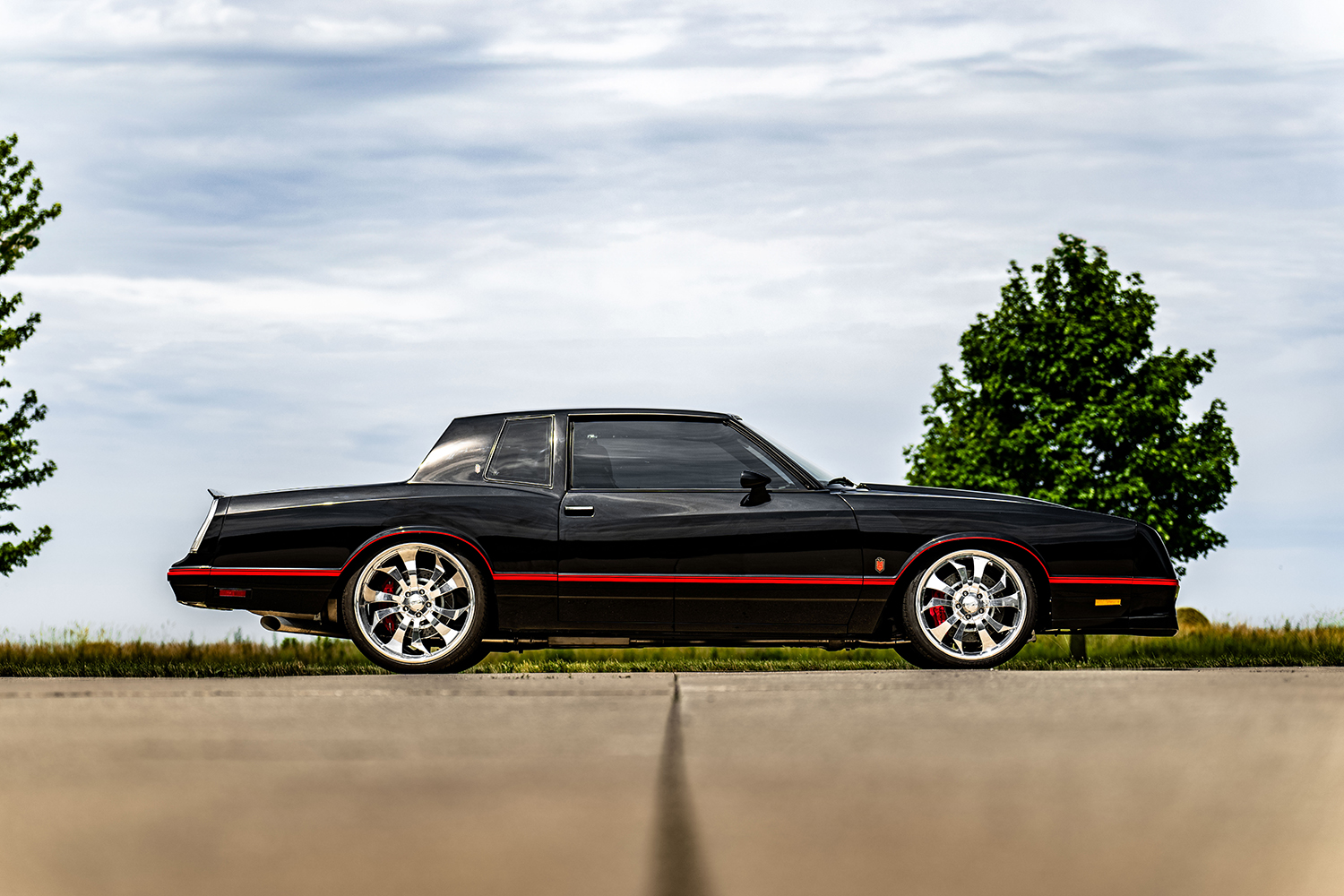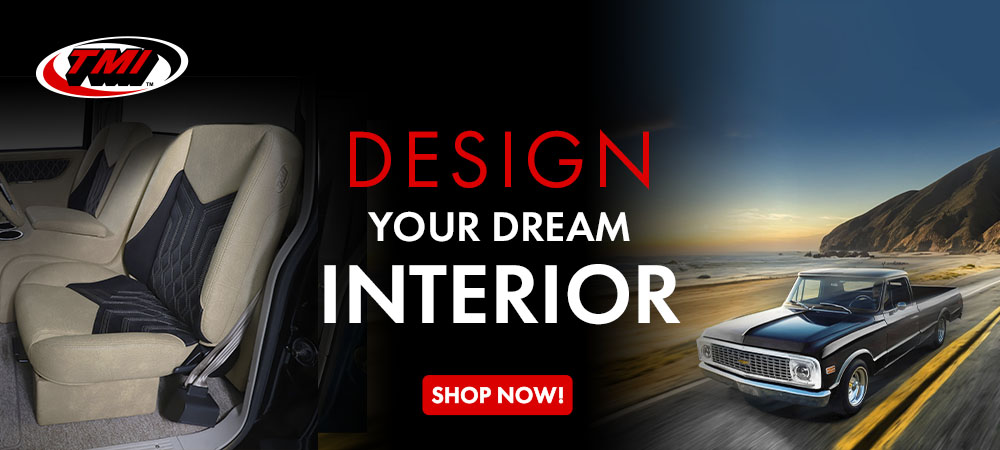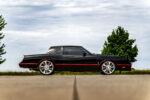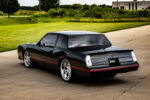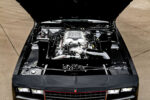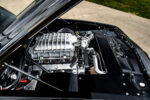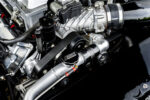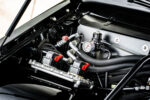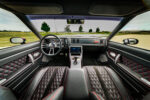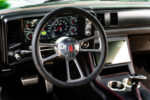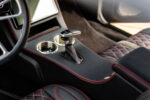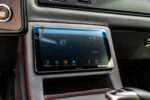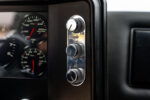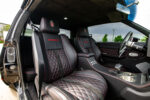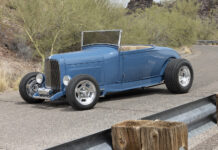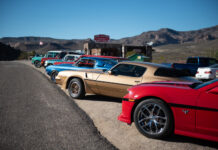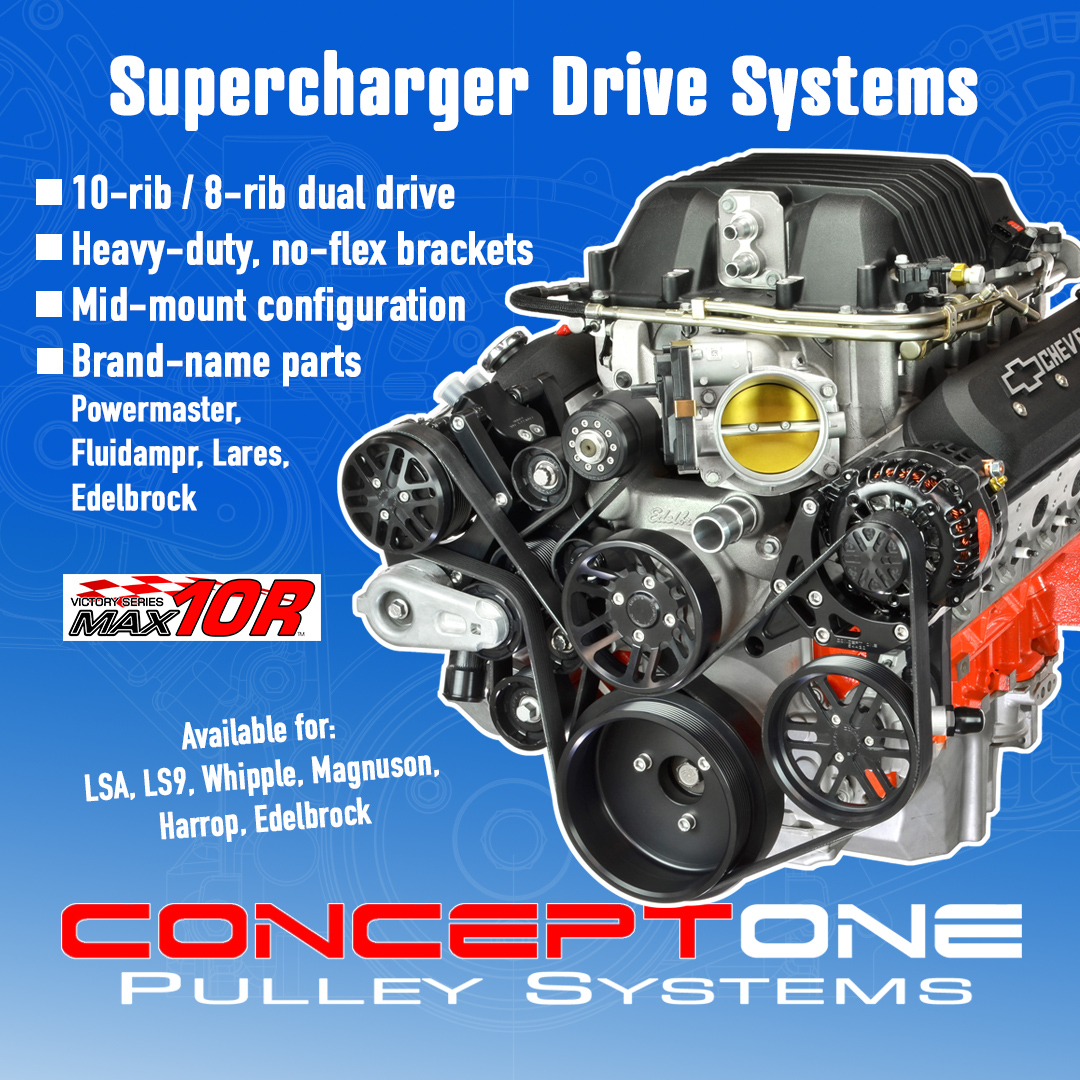By Brian Brennan – Photography By Matt Lankford
We get why Derrick Lyon of Washington wanted to remove the anemic small-block that his 1985 Monte Carlo was delivered with—any self-respecting hot rodder would. This was a time when horsepower wasn’t a popular word. However, Derrick figured out how to have his choice in hot rods from both an aesthetic and a performance standpoint.
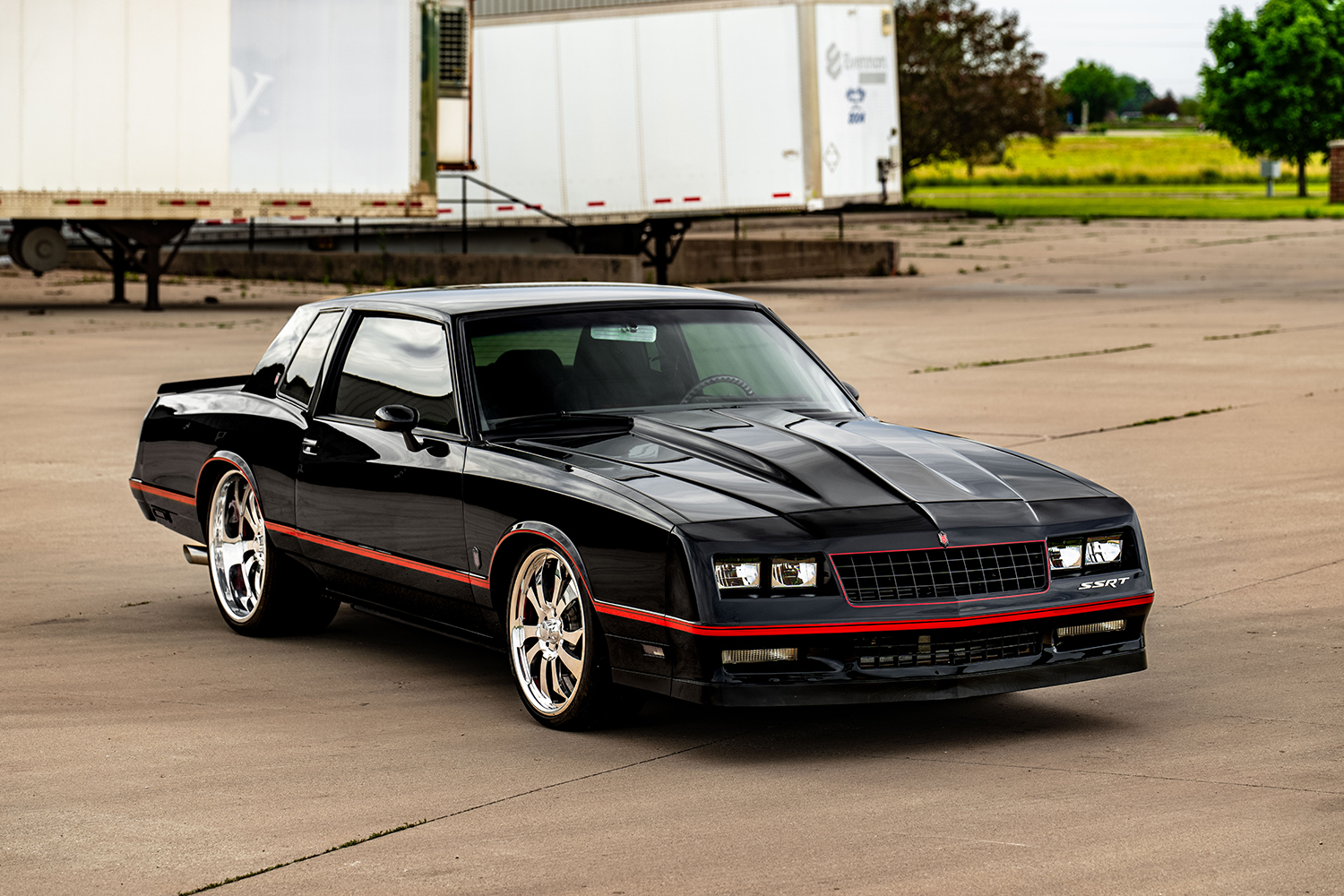
A little background on why Derrick chose the Monte Carlo.
“My high school car was a Monte Carlo. The day I sold it, I regretted it! I waited until I was older, could afford to build a hot rod, and found a perfect-condition Monte Carlo with 30,000 original miles. Bone stock! Through this time I managed to obtain a Hellcat, and my love for Dodge grew. That’s when I came up with the idea of making my Monte with a Hellcat swap. I wanted to be different and have the best of both worlds.
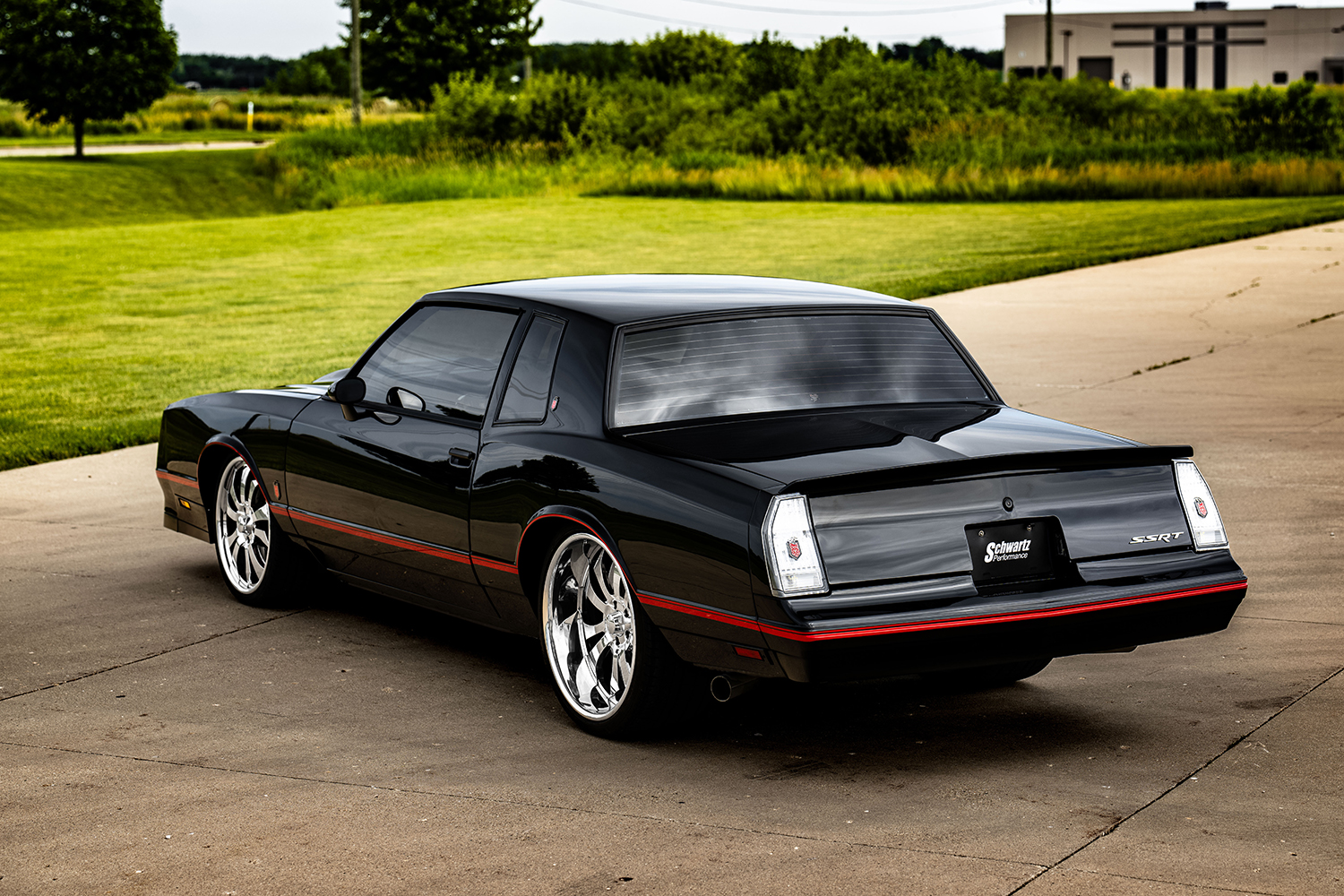
“After attempting to integrate all the factory Hellcat Equipment, such as the instrument cluster, BCM, and various body sensors, we determined it was not feasible. The G-body dashboard is not deep enough to house a factory BCM, Vintage Air Evaporator Box, and all other wiring components. We had to step back and find a way to make the vehicle operate reliably without using the factory BCM. We decided to utilize a crate engine ECU, wiring harness, a German transmission controller, and Holley Pro Dash, which ended up working out great.”
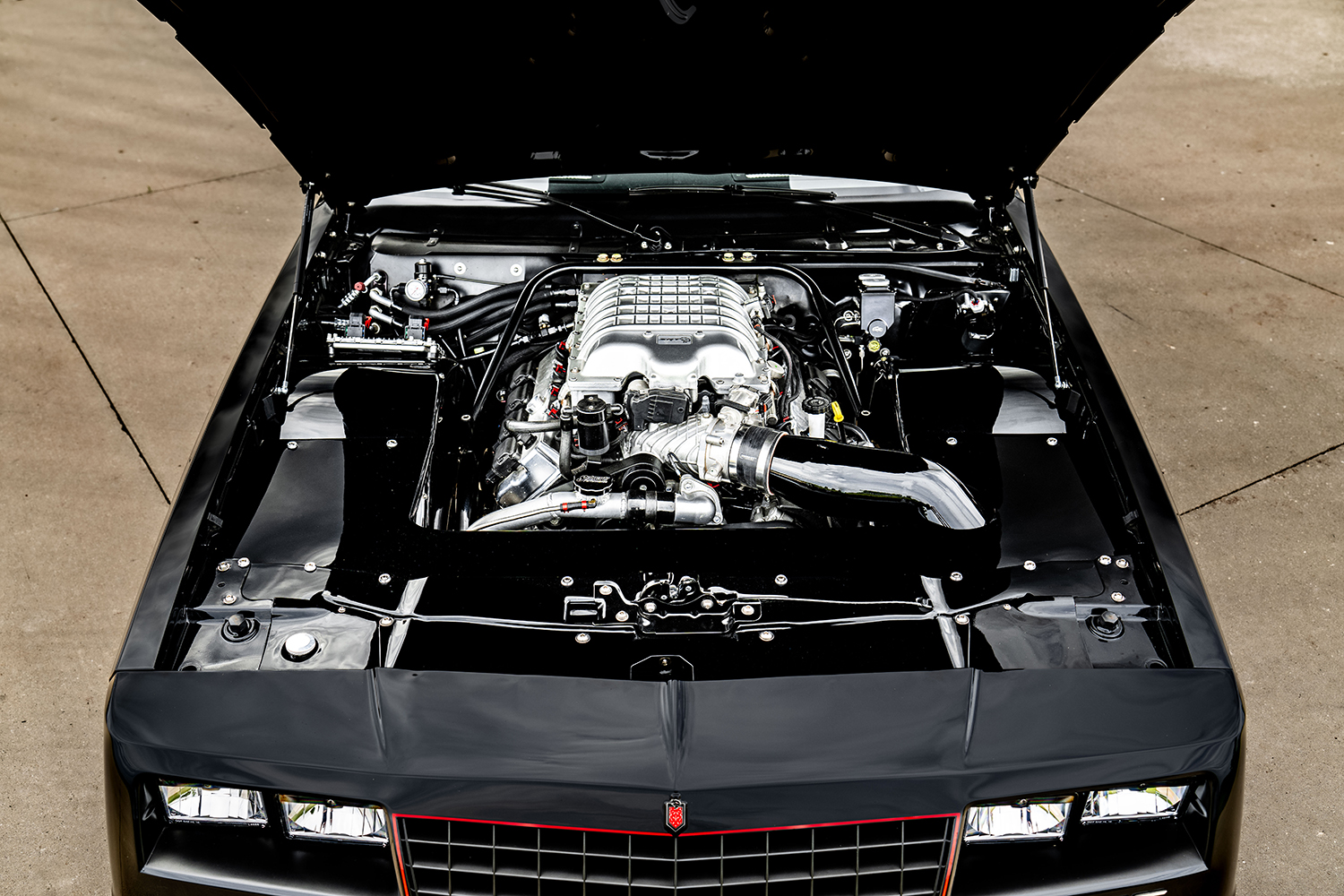
To complete his journey, he enlisted the help of Schwartz Performance for both their expertise in products to be used and avail himself of their building expertise. Derrick opted for a Schwartz Performance G-Machine chassis that is a bolt-in operation, given it uses the factory mounting points. There are a couple of alterations: The factory tank placement is moved from offset to centered, the spare tirewell is removed, and its new offering is supplied. From here, the G-Machine chassis is built to accept 345 rubber and up to 14-inch-wide wheels if a mini-tub is installed. In Derrick’s 1985 G-body, mini-tubs were installed to handle the full complement of Bonspeed wheels that measure 20×9 and 22×12 and are covered with Pirelli P Zero 255/30ZR20 and 335/25ZR22.
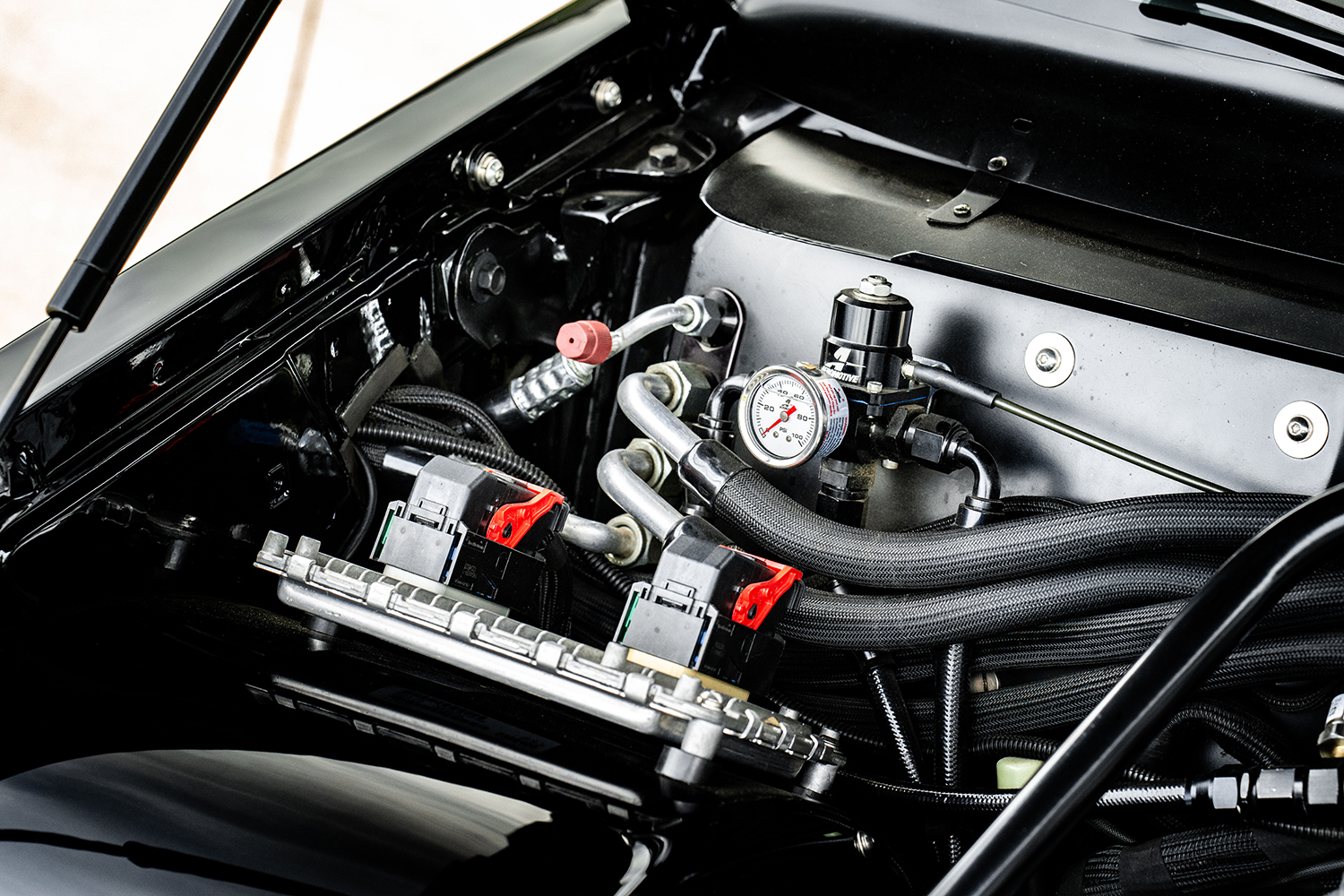
The IFS is based on a Schwartz Performance frictionless suspension with adjustable long-travel Ridetech coilover shocks, a Flaming River quick-ratio 12:1 rack-and-pinion, and Baer Pro-Plus six-piston calipers plus drilled-and-slotted 14-inch rotors. The rear suspension is based on a Moser full-floating 9-inch that is narrowed to 58 inches and houses an aluminum Currie rear differential spinning 3.70 gears, a Truetrac differential, Moser 35-spline axles, and matching Baer brakes. The rearend is located by means of a bind-free triangulated four-link with Ridetech adjustable long-travel coilover shocks.

The Mopar 6.2L Hellcat V-8 utilizes all this performance-tuned suspension and now transfers 814 rwhp and 773 lb-ft of torque to the rear wheels. The Hellcat now features a custom 5-inch aluminum air intake tube, CNC-ported aluminum heads, custom billet valve covers, and stock ignition. Other power-boosting accessories include the larger lower pulley on the supercharged V-8, 1,300cc injectors, and tuned for E85 gasoline. The OEM Hellcat radiator and a Fluidyne intercooler handle the cooling chores. The exhaust system begins with Schwartz Performance–fabricated stainless steel 1-7/8-inch headers dropping into 3-inch tubes running back to a pair of MagnaFlow mufflers with Stainless Bros. resonators. The Mopar 8HP90 automatic is coupled to the Hellcat and uses a factory Hellcat shifter.
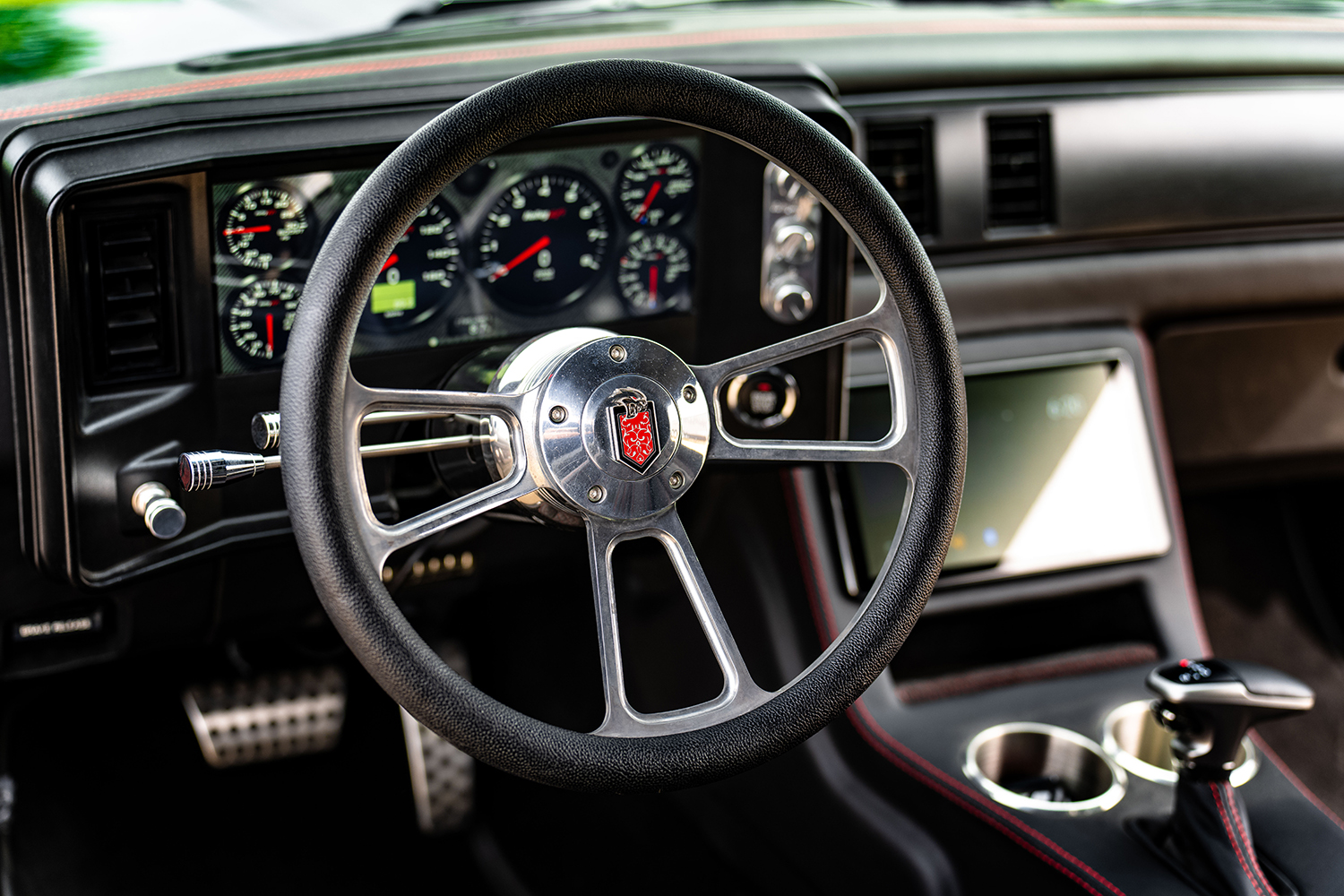
The body is effectively a stock G-body 1985 Monte Carlo with all the body- and paintwork in Diamond Black from the Dodge palette of colors, performed at Schwartz Performance. The interior still uses the factory Monte Carlo dash, now outfitted with a Holley 12.3-inch Pro-Dash and the Vintage Air A/C controls. This aftermarket instrument panel is customizable with various gauge and indicator screens that can be programmed to display any parameter you need from a Holley EFI system. You can also tune the engine without hooking up to a laptop, making this dash-instrument system highly useful. An American Autowire universal wiring harness is used with a custom engine harness to provide the obligatory electrics. Also employed is the Flaming River tilt column with a Billet Specialties steering wheel with the Hellcat logo on the horn button. The seating and center console are more Hellcat interior accessories. The black leather with the red stitching in the “Red Key” treatment is another homage to the Hellcat identity skillfully stitched by Cassin Customizing.
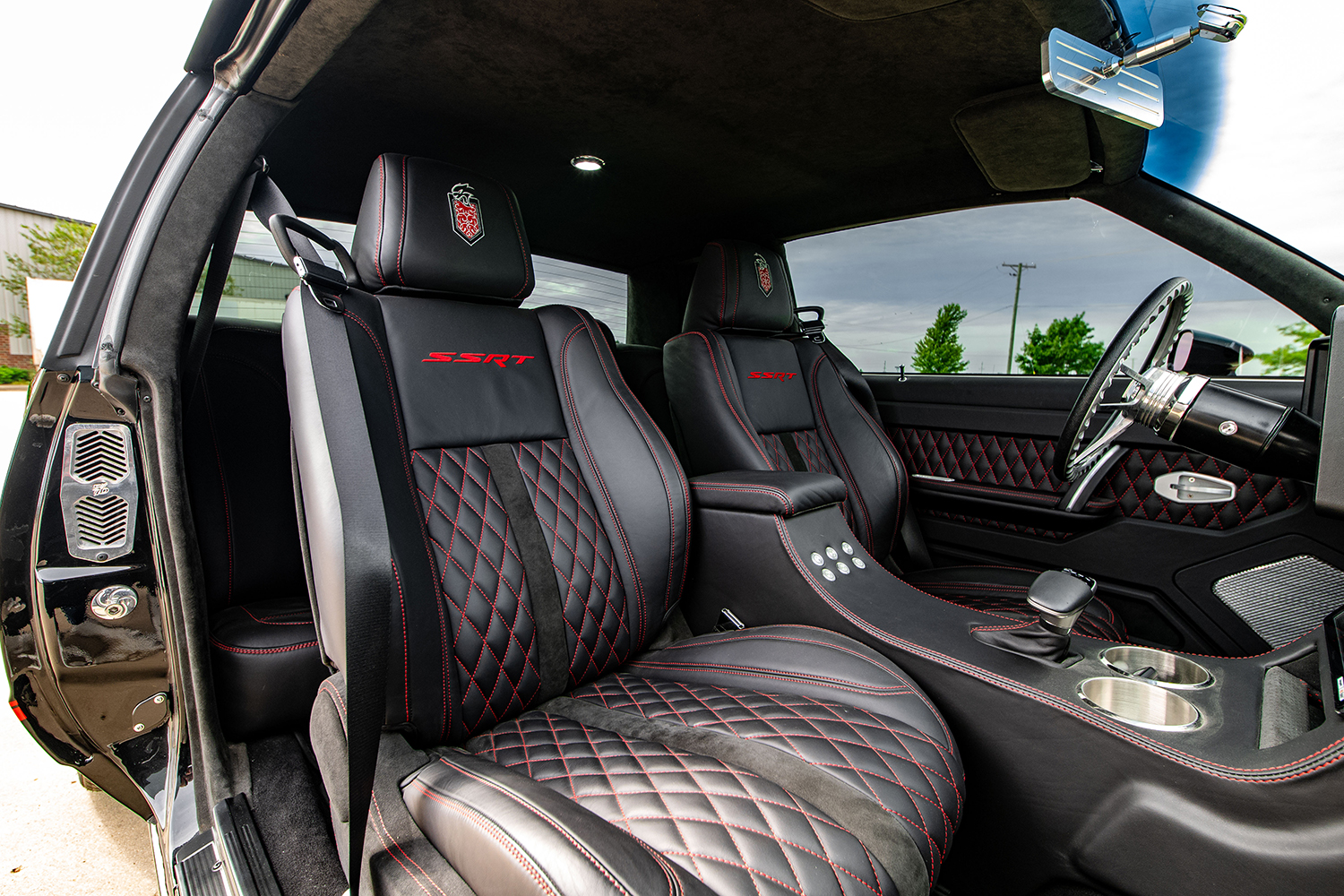
We now know it’s possible to blend a Chevy and a Chrysler and come away with something greater than its parts.
Check out this story in our digital edition here.











